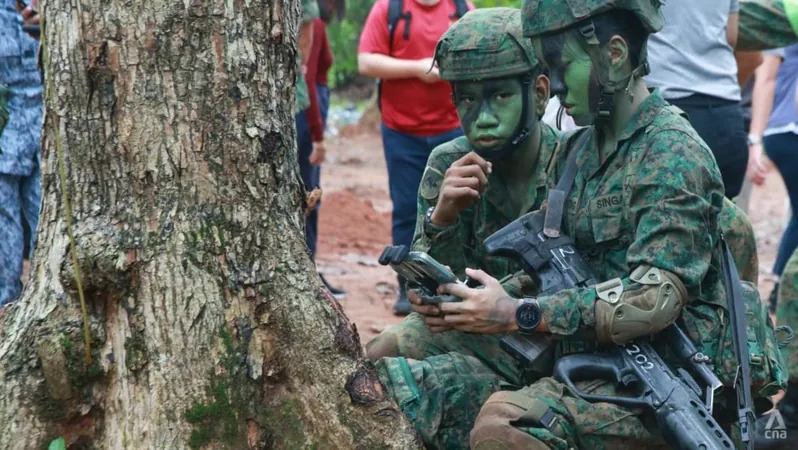
Singapore's Military Drone Revolution: Adapting to the New Era of Warfare
2025-08-31
Author: Li
Singapore's Armed Forces Embrace Drone Technology
The Singapore Armed Forces (SAF) is making significant strides in enhancing its drone capabilities, responding to pressing manpower challenges and the growing importance of unmanned systems in modern warfare. As global military strategies evolve, SAF's push towards integrating drones comes with new hurdles, particularly the need for extensive training and collaboration across its various branches.
Training the Next Generation of Soldiers
In a milestone announcement, Defence Minister Chan Chun Sing revealed that new recruits in Basic Military Training will now learn both to operate and counter drones. The inaugural group, over 3,000 strong, began their training in July and is set to graduate this September. This initiative follows recent advancements, including the establishment of dedicated units focused on unmanned aerial vehicles (UAVs) operations.
Building Defensive Measures Against Drones
On the defensive front, the SAF is also setting up a new counter-drone unit, equipped with advanced sensors and jamming technologies to neutralize potential threats. Even the Singapore Navy is innovating, incorporating affordable, commercially available drones into its arsenal.
Learning from Global Conflict
The regional surge in drone adoption mirrors their impact in international conflicts. For instance, Ukraine’s drone operations against a larger adversary have demonstrated their tactical utility, prompting countries like Taiwan to integrate UAVs into their defense strategies against perceived threats.
The Southeast Asian Landscape
In Southeast Asia, the use of drones has surged amid ongoing conflicts, with Myanmar’s military employing them against resistance forces. Similar drone usage has been reported in border clashes between Cambodia and Thailand, illustrating the region’s growing reliance on UAV technology.
Confronting Integration Challenges
Despite these advancements, SAF faces the critical challenge of integrating unmanned systems into its predominantly manned military structure. Experts emphasize that a clear understanding of drones' capabilities is essential, necessitating scaled training before joint operations can occur effectively.
Establishing a New Training Paradigm
The new drone training curriculum in Basic Military Training aims to familiarize recruits with essential UAV operations. Each recruit will undergo approximately six hours of drone training, utilizing around 40 commercially available drones to hone their skills.
Innovative Solutions to Long-Term Challenges
This training initiative is part of broader technological innovations aimed at addressing longstanding challenges, including Singapore’s declining birth rates and an ageing population that affects the National Service pool. However, it’s important to note that traditional soldiering skills remain a focus amidst these advancements.
Embracing the Future of Warfare
As militaries worldwide strive to keep pace with rapidly evolving technologies, Singapore’s military program indicates a significant shift towards recognizing drones as integral to future warfare. The emphasis on UAV training is a proactive move to ensure that SAF remains prepared and strategically advantageous in uncertain times.
Recognizing drones as a fundamental aspect of military operations underscores Singapore's commitment to maintaining its operational readiness in an increasingly polarized world.






 Brasil (PT)
Brasil (PT)
 Canada (EN)
Canada (EN)
 Chile (ES)
Chile (ES)
 Česko (CS)
Česko (CS)
 대한민국 (KO)
대한민국 (KO)
 España (ES)
España (ES)
 France (FR)
France (FR)
 Hong Kong (EN)
Hong Kong (EN)
 Italia (IT)
Italia (IT)
 日本 (JA)
日本 (JA)
 Magyarország (HU)
Magyarország (HU)
 Norge (NO)
Norge (NO)
 Polska (PL)
Polska (PL)
 Schweiz (DE)
Schweiz (DE)
 Singapore (EN)
Singapore (EN)
 Sverige (SV)
Sverige (SV)
 Suomi (FI)
Suomi (FI)
 Türkiye (TR)
Türkiye (TR)
 الإمارات العربية المتحدة (AR)
الإمارات العربية المتحدة (AR)